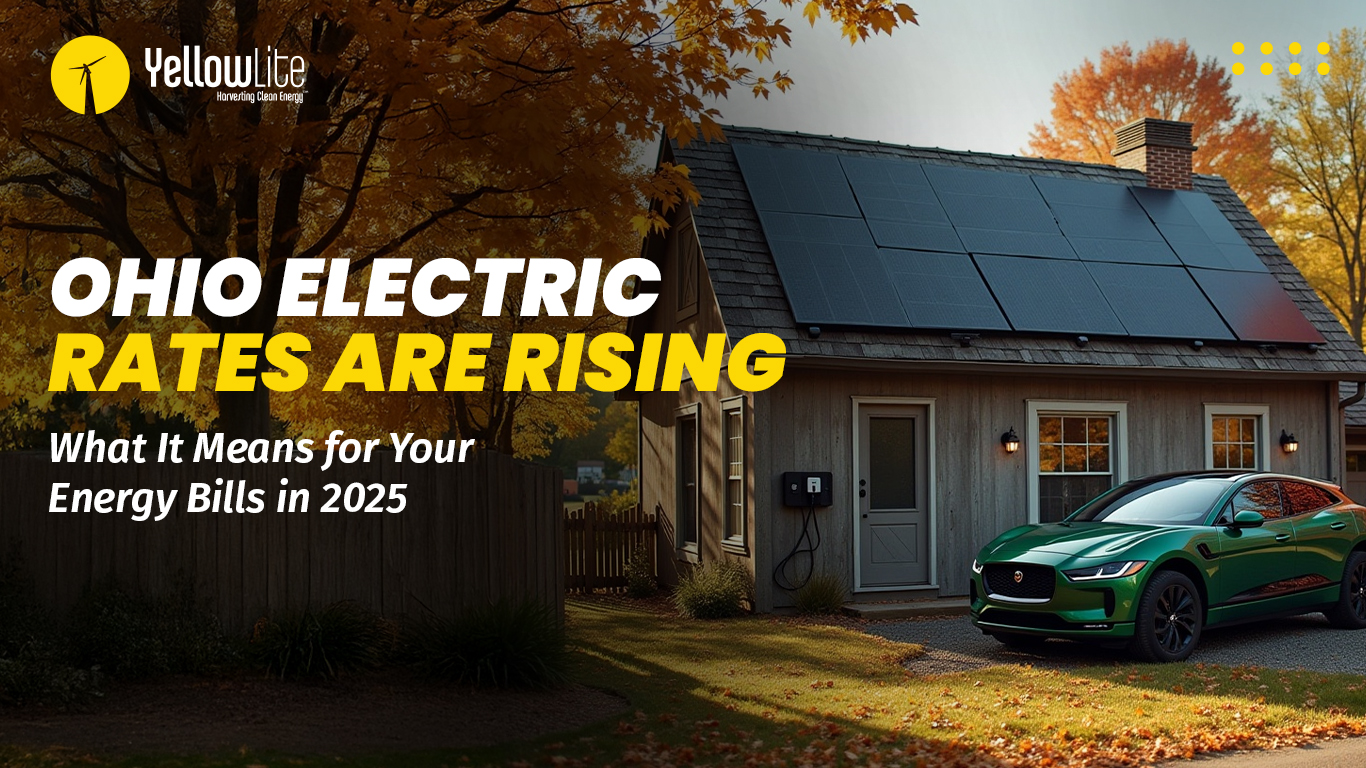The Ultimate Guide to Net Metering in Ohio: Benefits, Policies, and Savings
Net metering in Ohio has established itself as a pivotal policy for solar energy users, helping both homeowners and businesses save significantly while optimizing their renewable energy investments. This guide delves into the specifics of net metering in Ohio, including eligibility, compensation rates, and strategic tips to enhance your solar energy production and consumption with the support of YellowLite.
What is Net Metering?
Net metering is a beneficial billing mechanism in Ohio that allows solar panel owners to balance their electricity costs by earning credits for the excess energy their systems produce. This excess energy is sent to the grid and can be drawn upon during periods of low production, such as at night or on cloudy days, effectively reducing net metering costs.
Key components of net metering include:
- Bi-Directional Meters: These meters accurately track the energy you consume from the grid and the surplus you contribute back.
- Energy Credits: Homeowners earn credits for each kilowatt-hour (kWh) of excess energy, typically at retail electricity rates, which helps reduce net metering costs.
- Monthly Rollover: In Ohio, these credits can roll over to the next billing cycle, contributing to ongoing savings and making net metering policies more appealing.
This policy framework supports solar adoption by decreasing energy bills and providing a more predictable ROI for solar system owners.
How Net Metering Works in Ohio

Ohio's favorable net metering policies make solar installations a lucrative option. Here’s how the system operates:
- Energy Production: Solar panels generate electricity, powering your home or business.
- Surplus Energy: Any excess energy is channeled back to the grid and recorded by a bi-directional meter.
- Earning Credits: Credits accrued for surplus energy are calculated at the retail electricity rate, enhancing your savings.
- Using Credits: These credits are used when your panels produce less energy, offsetting costs efficiently.
- Annual Settlements: While some utility companies offer indefinite credit rollover, others may settle unused credits annually.
Eligibility Criteria for Net Metering in Ohio
To implement net metering in Ohio, you must meet the following requirements:
- Grid-Connected Solar System: Essential for integrating with net metering.
- System Size Compliance: The system should not exceed your property’s energy needs, as dictated by past usage.
- Utility Provider Participation: Confirm that your utility provider supports net metering.
Compensation Rates and Ohio Solar Policies
Ohio’s net metering policies generally offer retail-rate compensation for excess energy sent to the grid, which provides maximum financial benefits. However, there are nuances based on individual utility policies:
- Retail Rate: Most Ohio utilities credit energy at the same rate you pay for electricity.
- Annual Credit Settlement: Some utilities settle unused credits at the end of the billing year, either rolling them over indefinitely or compensating at a lower rate.
- Aggregate and System Size Caps: Utility-specific caps on total solar capacity may limit participation.
Staying updated on Ohio solar policies and consulting resources like the Public Utilities Commission of Ohio (PUCO) is crucial to understanding the latest rules.YellowLite is also instrumental in helping you navigate these net metering policies and optimize your system for maximum efficiency and savings.
Recent Legislative Changes
Net metering policies are subject to change as the state adapts to evolving energy needs and market dynamics. Recent updates include:
- Time-of-Use Pricing: Increasing adoption of time-of-use (TOU) rates encourages homeowners to shift energy consumption to off-peak hours for additional savings.
- Focus on Energy Independence: Legislative efforts promote pairing solar systems with battery storage to reduce grid dependency.
- Grid Modernization: Policies now aim to balance fair compensation for solar owners with maintaining grid reliability and affordability for all users.
Optimizing Solar Energy Savings with Net Metering

To maximize your solar energy savings, consider these strategies:
1. Align Energy Usage with Solar Production
Schedule energy-intensive tasks (e.g., laundry, dishwashing) during peak production hours to minimize grid dependence.
2. Integrate Battery Storage
Pairing solar panels with battery storage allows you to store surplus energy for later use, reducing reliance on the grid and enhancing your savings. This is especially beneficial in areas with evolving net metering rules in Ohio or during power outages.
3. Leverage Smart Solar Technology
Smart inverters and energy management systems can help optimize your energy usage patterns. By monitoring real-time production and consumption, you can make adjustments to maximize efficiency.
4. Monitor Utility Policies
Stay informed about changes in net metering policies and rates to maximize your benefits.
Net Metering and Advanced Solar Technology
The integration of battery storage and smart solar technology is transforming how homeowners manage energy production and consumption. Here’s how these innovations complement net metering Ohio:
Battery Storage
- Energy Independence: Store excess solar energy for use during peak pricing periods or outages.
- Enhanced Savings: Reduce reliance on the grid during non-production hours.
- Future-Ready: Prepare for potential shifts in net metering policies, such as credit reductions.
Smart Solar Systems
- Real-Time Monitoring: Track production, consumption, and credit accumulation.
- Efficiency Optimization: Adjust energy usage to align with solar production.
- Predictive Insights: Smart systems provide data on weather and energy trends, helping you plan energy use.
With favourable Ohio solar policies, including retail-rate compensation and flexible credit rollovers, there has never been a better time to invest in solar energy. Pairing your system with battery storage and leveraging smart solar technology ensures you stay ahead of policy changes and maximize your investment.
At YellowLite, we’re committed to helping you navigate the intricacies of net metering in Ohio to ensure you maximize your investment in solar technology. Whether it's designing the right system, integrating advanced technology, or keeping you informed of policy updates, our goal is to support your journey to sustainable energy independence.
FAQs
1. What is the current compensation rate for net metering in Ohio?
Most utilities offering net metering in Ohio provide retail-rate compensation for surplus energy, meaning you’re credited at the same rate you pay for electricity. This ensures maximum financial benefits for solar system owners. At YellowLite, we guide homeowners in understanding these policies to maximize their savings.
2. Can I participate in net metering in Ohio with a battery storage system?
Yes! Pairing solar panels with battery storage lets you store excess energy and use it during non-production hours, such as nighttime. This enhances both your savings and energy independence under Ohio's net metering policies. YellowLite specializes in designing systems that seamlessly integrate battery storage to optimize your energy usage.
3. Do net metering credits roll over in Ohio?
In most cases, unused credits earned through net metering in Ohio roll over to the next billing cycle. However, some utilities may settle these credits annually, so it’s essential to check your utility provider’s specific policy. YellowLite’s team helps you navigate these details to ensure you’re fully informed.
4. What happens if net metering policies change in Ohio?
Staying informed about Ohio solar policies is crucial. Potential changes could impact compensation rates or credit rollovers. Mitigate risks by pairing your solar system with battery storage and utilizing smart solar technology to maximize efficiency and savings. YellowLite keeps up with policy updates to ensure your solar investment remains future-proof.
5. How does time-of-use pricing affect net metering in Ohio?
Time-of-use pricing, increasingly adopted by utilities, encourages energy use during off-peak hours. This can work alongside net metering in Ohio by allowing you to maximize savings while reducing grid strain during peak demand times. YellowLite’s smart solar systems are designed to help you adapt to such pricing structures effortlessly.
At YellowLite, we’re passionate about helping Ohio homeowners navigate net metering in Ohio and other solar policies to make the most of their solar energy systems. Whether it’s choosing the right system, integrating battery storage, or staying updated on policy changes, we’re here to support you every step of the way.



